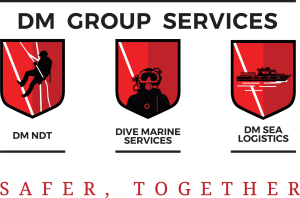KEEPING YOUR VESSEL IN ‘SHIP’ SHAPE
nderwater Hull Inspection has been around for centuries. In bygone days, the strongest swimmers on galley ships were sent below hull with primitive tools to remove barnacles and seaweed, or to patch up holes. As ships got bigger and more sophisticated, the necessity for regular hull inspection by the first generation of commercial divers became more imperative as a means to avoid ocean catastrophe from hidden damage. Today, we have hundreds of thousands of enormous ships carrying crew and cargo over vast distances at any one time, so the safety and operating stakes have never been higher.
We’ve been conducting underwater hull inspections (hyperlink to service page) for decades, and there isn’t much we have not seen in that time; from ships that are well maintained on a regular basis to those badly neglected and in dire need of attention, so we can speak from experience on the high-value and importance of regular hull inspection.
1. To ensure the safety of a ship
The most important reason to perform regular underwater hull inspection is for peace of mind. It only takes one or two structural problems, out of sight below the hull, to significantly impact a ship’s safety or operational performance. Cracks, dents, leaks or irregularities of any kind will, over time, compromise your hull and possibly the safety of all those on board.
Emergency inspections are also not uncommon when a ship hits an object on the seafloor or floating in the water; confirming that the vessel hasn’t incurred any damage is vital in keeping everyone safe. The ROVs we use are perfect for these tasks – highly efficient with easy deployment from anywhere; they allow for an extremely swift review below the hull by expert inspection divers.
Non-native or invasive alien species (AIS) (hyperlink to blog) accumulate on vessel hulls as they journey from port to port, awaiting liberation through underwater hull cleaning or natural release into local waters. The impact of AIS migrating to new territories can have a profound economic and environmental effect on ecosystems around the globe, causing big ecological problems for their new hosts. Aqua-culturalists, environmental departments and marine biologists cite cases of notable impact from Singapore to Saint Petersburg; such professionals safeguard the well-being of local fish stocks and the surrounding coastal environment, so any uninvited species that potentially threaten the health of indigenous marine life requires proactive monitoring and action.
2. To control and eradicate Alien Invasive Species (AIS)
Importantly, AIS also create operational issues for vessels by slowing down passage; increased fuel is then required to make up the lost speed which adds to running costs and carbon emissions. A preliminary assessment for AIS using mini-ROV inspection for visiting vessels allows ship owners and managers to determine if hull cleaning is appropriate for operational or environmental reasons.
3. To monitor the status of your paint job.
Maritime paint is unique in that it’s designed to withstand a range of water temperatures, currents, ocean environments and bio-fouling organisms. It’s a big, expensive job to paint the entire hull of a vessel, and the downtime comes at a significant economic cost to ship owners. By regularly checking the condition of the maritime paint, localised areas of paintwork can be easily refreshed before vessel surfaces degrade and require more significant and costly maintenance and vessel downtime.
We welcome the opportunity to discuss your hull inspection requirements and our commercial dive teams are on standby, whether you need an emergency, one-off or regular service. Contact us for details of our services.



